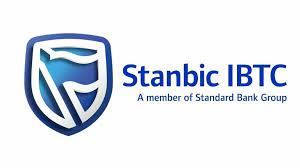Strong cost pressures meant that firms operating in the Nigerian private sector remained under pressure in September.
Although new order growth quickened, helping to support a renewed increase in business activity, rates of expansion in each were only modest. Input prices increased at one of the sharpest rates on record, largely due to exchange rate weakness and higher fuel costs.
The headline figure derived from the survey is the Stanbic IBTC Purchasing Managers’ Index. Readings above 50.0 signal an improvement in business conditions on the previous month, while readings below 50.0 show a deterioration.
The headline PMI posted 51.1 in September, up from 50.2 in August but still only just above the 50.0 no-change mark. As such, the index signalled a slight monthly improvement in business conditions.
New orders increased for the sixth month running in September as some firms signalled an improvement in demand. While the rate of expansion quickened from that in August, it remained only modest as market conditions remained weak and customers were deterred by price hikes.
Output returned to growth, meanwhile, following a slight reduction in August. In a similar vein to new orders, however, the pace of increase was only modest amid widespread demand weakness. Three of the four monitored sectors saw output expand, the exception being manufacturing.
Sharp rises in prices were a key factor limiting demand in the private sector at the end of the third quarter. Overall input costs rose at a pace that was only marginally weaker than August’s survey record.
Purchase costs were up substantially, mainly due to exchange rate weakness and higher fuel costs. Meanwhile, efforts by companies to help their staff deal with higher transportation costs meant that wages were raised markedly. The rate of staff cost inflation was only marginally softer than the series record posted in August.
Sharp increases in purchase costs fed through to a further steep rate of selling price inflation, despite the latest rise being the weakest since May.
Employment increased for the fifth successive month in September, albeit only slightly. Firms also expanded their purchasing activity, but the rate of growth eased to the weakest in six months. This was also the case with regards to stocks of purchases.
Suppliers’ delivery times shortened amid competition among vendors, prompt payments and quiet traffic conditions.
Confidence in the year-ahead outlook for output was unchanged in September, thereby remaining among the weakest on record. Those companies that predicted a rise in activity linked this to plans to take on extra staff to help with business expansions.

